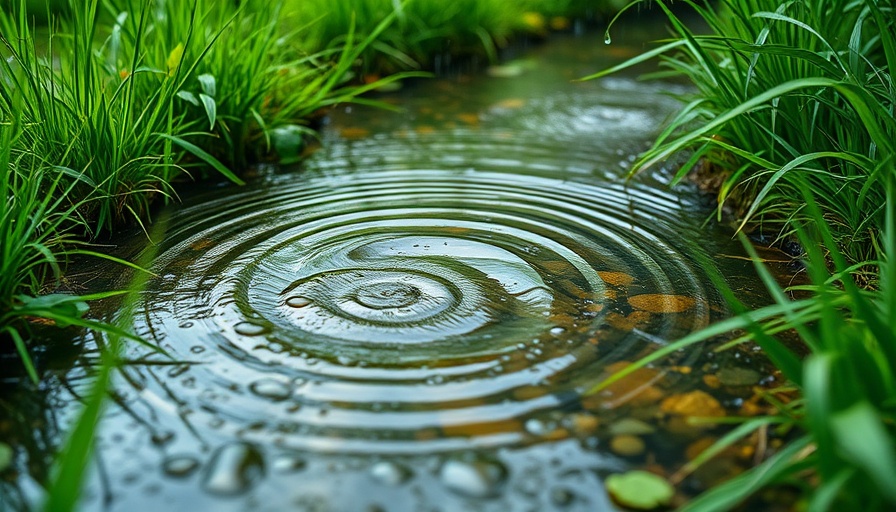
Understanding Stormwater Management: A Community Concern
Summer showers can be a sight to behold, bringing vibrant life to our gardens and reducing our watering chores, but the downside of heavy rainfall often looms large. As cities expand over the years, green landscapes are replaced with hard surfaces like asphalt, making stormwater management an emerging concern for homeowners and local communities. When downpours strike, these hardened surfaces channel rainwater directly into storm drains, picking up harmful pollutants along the way and leading to the saturation of our water systems.
How Hard Surfaces Impact Our Waterways
Traditional urban landscapes lack the natural absorption capabilities that the environment once had. When it rains, instead of soaking into the ground where it can nourish plants and replenish groundwater supplies, rainwater is diverted quickly into stormwater systems. This runoff often contains oil, chemicals, and other pollutants, ultimately damaging our watersheds. By understanding how this process affects local ecosystems, homeowners can take meaningful steps to mitigate these adverse outcomes.
Empowering Homeowners: Practical Solutions for Stormwater Management
So, what can you, as a homeowner, do to combat these challenges? Fortunately, there are effective solutions. One of the simplest approaches is to consider low impact development (LID) strategies around your home.
- Rain Gardens: These creatively designed gardens help collect, absorb, and cleanse superficial water runoff. The plants within these gardens act as natural filters, limiting the amount of toxins that flow into our waters.
- Bioswales: These landscaped areas can channel and manage stormwater. They slow down the flow of rainwater, allowing it to percolate into the earth while promoting native flora that aids in filtration.
Implementing these LIDs can enhance biodiversity on your property while significantly reducing the impact of flooding and runoff on your home.
Naturalization Practices: Creating Biodiverse Spaces
Speaking of biodiversity, have you thought about transforming your conventional landscaping into a flourishing, natural landscape? By opting for native plants and reducing non-permeable surfaces, you can improve your property’s capacity to absorb rainfall. This not only creates a vivid and lively space but also mimics the ecosystems nature intended.
Naturalized areas can lead to decreased flooding and promote healthier environments while rewarding homeowners with lower maintenance needs and a reduced carbon footprint.
Community Advocacy: Supporting Local Stormwater Initiatives
As beneficial as these actions are on an individual basis, the impacts multiply significantly when communities unite in advocating for better stormwater management practices with local leaders. Homeowners have the means to promote more natural areas in neighborhoods and collaborative projects that combine ecological responsibility with community aesthetics.
Engaging in local initiatives like the Residential Rain Garden Program can amplify your efforts and enhance community resilience against storms. Collaboration and communication with local environmental organizations can provide vital resources and knowledge to support these developments.
Stay Informed and Get Involved
Remember to keep yourself educated about local regulations and initiatives. Many organizations like the Upper Thames River Conservation Authority offer educational resources that can help you stay updated on effective stormwater management practices.
By educating yourself and advocating for sustainable practices, you can contribute to crafting a community that balances urban growth and environmental wellbeing.
Make a Difference: Every Step Counts
Even though it may seem daunting to tackle rainstorms and the accompanying challenges head-on, every little bit helps. Consider what changes you can make on your property and within your community to promote effective stormwater management and embrace climate resilience.
From rain gardens to community advocacy, your voice and actions matter. So let’s take these small, proactive steps together to secure the health of our homes, neighborhoods, and environment!
If you're eager to stay updated on relevant programs and initiatives, be sure to sign up for newsletters that can guide your sustainable endeavors!
 Add Row
Add Row  Add
Add 




Write A Comment